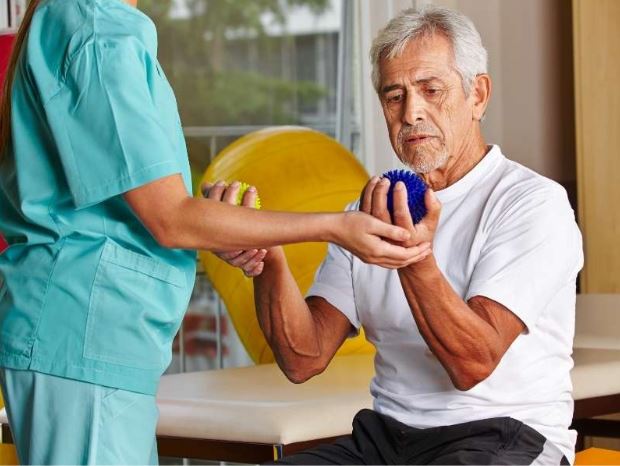How Occupational Therapy Helps Parkinson’s Patients Stay Independent at Home
One of the biggest fears for people living with Parkinson’s disease is losing independence. Simple activities like buttoning a shirt, cooking a meal, or walking safely around the house can slowly become more difficult.
That’s where occupational therapy (OT) makes a difference. By focusing on everyday function and safety, OT helps Parkinson’s patients maintain independence at home and continue doing the activities that matter most.
What Is Occupational Therapy?
Occupational therapy is a type of rehabilitation that helps people adapt to physical changes so they can manage daily life more effectively. For Parkinson’s patients, OT goes beyond movement—it’s about practical strategies and tools to improve quality of life.
How OT Supports Independence in Parkinson’s
1. Energy Conservation Strategies
Fatigue is a common symptom of Parkinson’s. Occupational therapists teach pacing techniques, activity planning, and rest strategies so patients can use their energy more effectively. (See our blog on Parkinson’s and Fatigue for more tips.)
2. Home Safety Modifications
From grab bars in the bathroom to better lighting in hallways, OT helps identify and fix fall risks at home. Learn more about preventing accidents in our guide: How to Stay on Your Feet: Fall Prevention at Home.
3. Adaptive Equipment
Tools like weighted utensils, dressing aids, or voice amplifiers allow patients to continue daily activities with less frustration and more independence.
4. Fine Motor Skill Training
Parkinson’s can make handwriting, buttoning, or eating challenging. OT uses exercises and adaptive tools to improve coordination and precision.
5. Caregiver Education
Occupational therapists also train caregivers in safe transfer techniques, home setup, and how to support independence without taking over.
Why OT Matters for Parkinson’s Patients
Maintaining independence isn’t just about safety—it’s about dignity, confidence, and emotional well-being. By focusing on daily living skills, OT empowers patients to remain active participants in their own lives.
External Resource: For more on OT and Parkinson’s, see the American Parkinson Disease Association’s OT resource page.
Support at Synaptic Rehab
At Synaptic Rehabilitation, our Parkinson’s Wellness Center offers individualized occupational therapy programs designed to meet patients where they are. Whether it’s learning new ways to cook, dress, or move around the home, our therapists are here to help.
📍 Visit us at 1200 Route 22 East, Suite 4, Bridgewater, NJ 08807
📞 Call: 908-801-6425
Steven Cheung, DPT
Steven is the founder and lead physical therapist at SYNAPTIC Rehabilitation. He earned a BS in Exercise Science Applied Kinesiology from Rutgers University in New Brunswick, NJ and his Doctorate degree from American International College in Springfield, MA. Steven specializes in movement disorders such as Parkinson’s disease and many other neurological disorders. Outside of practicing physical therapy Steven enjoys time with his wife, running, and staying active.

